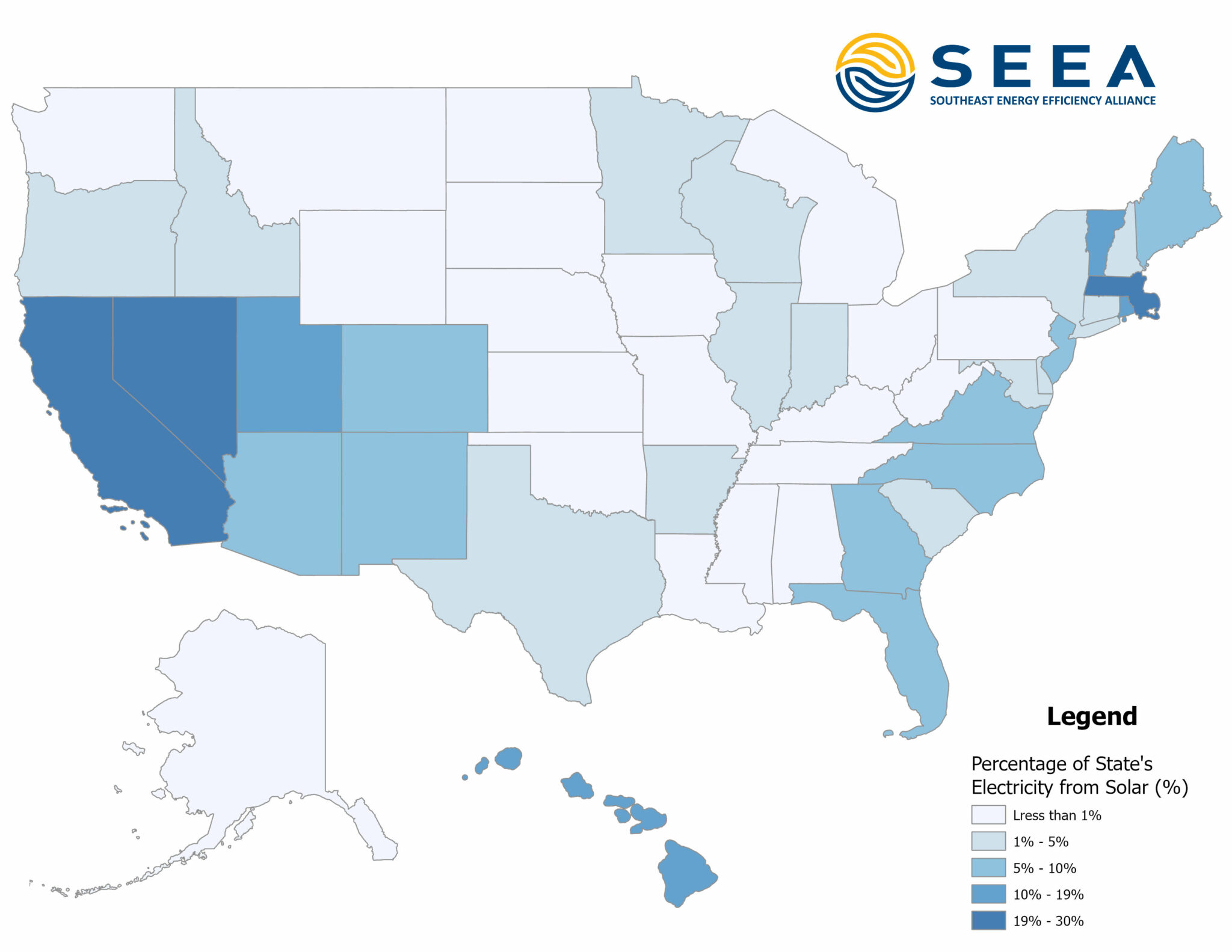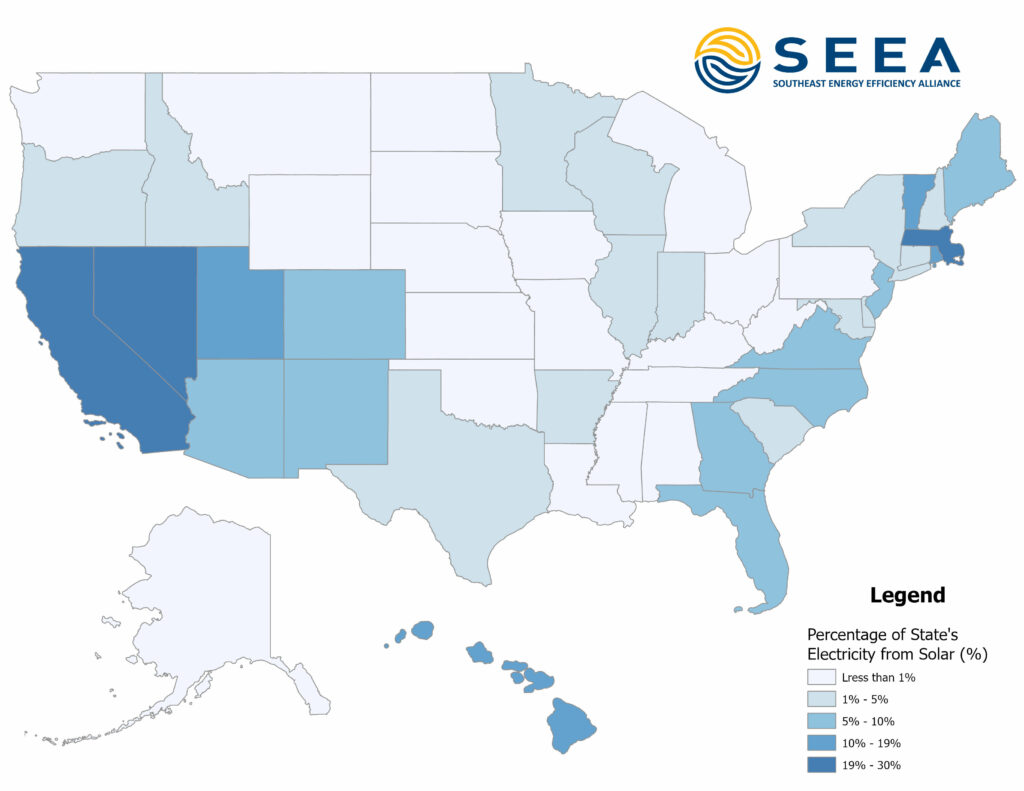Map of the Month – March

Joy Ward and Bianca Acha-Morfaw

In honor of Women’s History Month, our March map pays tribute to Mária Telkes, a Hungarian-American scientist whose contributions to the field of solar energy research earned her the nickname “The Sun Queen.” Telkes is best remembered for her invention of the solar distiller, which was included in the military’s emergency medical kits in World War II. The solar distiller was also the first solar-powered heating system designed for residences. Telkes is remembered as one of the world’s foremost solar energy pioneers, with over 20 solar energy-focused patents.
This month’s map shows the percentage of electricity generated from solar by both small-scale and utility-scale facilities across the United States. The map was created using data from the Solar Energy Industries Association (SEIA), a national non-profit trade association that supports the U.S. solar-energy industry.
More solar electricity is generated on the east and west coasts compared to inland states. Indicated with a darker hue, California, Nevada, and Massachusetts, have the highest percentages of solar-generated electricity at 27.32%, 23.32%, and 19.33%, respectively. The highest-ranking southeastern state, North Carolina, generates 8.92% of its electricity from solar. While most states are increasing their use of solar, 40% of states currently generate less than 1% of their electricity using solar panels.
Solar energy is becoming more accessible. In 2022, the U.S. Department of Energy’s Berkeley Lab reported a record increase in utility-scale solar generation. New installations are predicted to triple by 2030 as costs have fallen more than 75 percent since 2010, with utility companies increasing commitments to renewable energy and creating resources to aid residents in their solar installation process. Decreased costs, along with the passage of the Inflation Reduction Act, which contains incentives and tax breaks, should expand the advantages of using solar.
While utilities are helping educate residents on the solar installation process, Solar and Energy Loan Fund (SELF), an affordable financing nonprofit, is providing communities with access to low-cost financing. SELF provides low-interest rate home improvement loans, with a credit-free application process. These loans can be used for solar installations along with other types of sustainable property improvements.
When coupled with other energy efficient designs and technologies, renewable energy can work in tandem to increase affordability and mitigate the impacts of climate change by advancing decarbonization and reducing greenhouse gas emissions.

